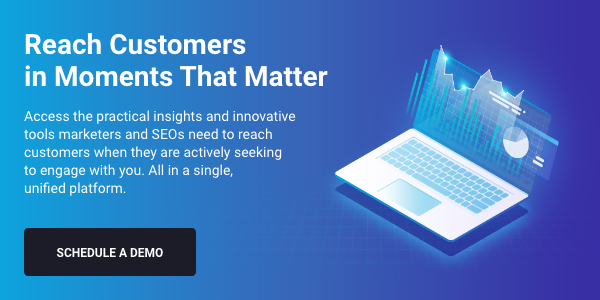In doing my research for this post, I found fewer digital marketing books than I expected on each of the topics I wanted to cover. I guess in the digital era, these topics are more often being covered in posts and ebooks. However, if you are reading this post then you, like me, prefer good old books over digital marketing books for self-education.
I decided to find and recommend digital marketing books for each digital channel: SEO, Paid Search, Email, Display, Social, Blog, and Webinar. But before I dive in on the digital marketing books, let me share an excellent resource.
You won't believe the findings in our latest channel share report. One digital channel continues to grow and this data will help you make the case and prioritize your traffic efforts. Also see our list of best marketing books and learn about what features deliver the best seo platform for your SEO success.
1. Digital Marketing for Dummies
By Ryan Deiss and Russ Hennesberry, 2017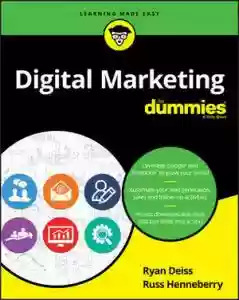
4.6 rating on Amazon, #53 in web marketing
So my #1 recommendation is Digital Marketing for Dummies published by Wiley, a BrightEdge customer. It’s a very readable 300 pages and covers the customer journey, marketing planning, landing pages, blogging, SEO, SEM, social, paid display, email, and data and analytics. Get a checklist of the marketing stack of technology categories.
I like the focus on landing pages, which often get lost in the shuffle of channel and media planning as a high-leverage link in the funnel chain. They also reiterate the importance of the offer and revisiting and tuning the offer regularly.
They provide 57 blog category ideas, including List, How-To, Research, Stat Roundup, People to Follow, Parody, Issue, Comparison, What-If, Challenge, and Products Tips to name just 11. On email, the recommend writing to answer the four questions: Why now? Who cares? Why they should care? Can you prove it? They introduce data.studio.google.com for visual reporting.
Lastly, traditional publishers like Wiley add the editors and designers to the writers to make a polished product that defines a classic reference book and provides the value most people seek from an educational business book. Highly recommended.
Overall, it is one of the extremely useful and valuable digital marketing books. Find out how to integrate SEO into the other marketing channels.
2. For recommended SEO books, see my Best SEO Books post.
Learn more about VSO or Vertical Search Optimization.
3. Don't Make Me Think Revisited: A Common Sense Approach to Web Usability
By Steve Krug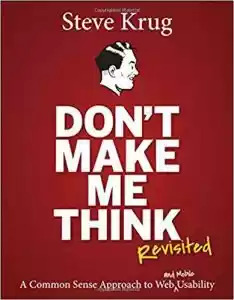
4.6 rating on Amazon, #1 in User Experience and Usability
Krug published the first edition in 2000 and the book has been the bible of user experience since the early 2000s. Web sites are the primary interface between most businesses and their customers. So all the great marketing campaigns in the world won't work well unless the site is effective at handling the customers marketing brings to it.
Download a free site style guide checklist to help you communicate your message to more customers.
The title is the recurring theme of the book: customers should not have to figure out or interpret your site, it should just work the way they expect. He adds his web facts of life to guide us: #1 We don't read pages. We scan them. #2 We don't make optimal choices. We satisfice them. #3 We don't figure out how things work. We muddle through. For the most part, be conventional and don't try to reinvent the wheel each update or release.
The book is shortish at 191 pages and uses the principles he recommends. It is colorful, uses high-contrast layout, and is very skimmable with clear headlines and subheads. Every marketer with a web site needs to read digital marketing books like this periodically.
4. Google AdWords for Beginners: A Do-It-Yourself Guide to PPC Advertising
By Cory Rabazinsky, 2015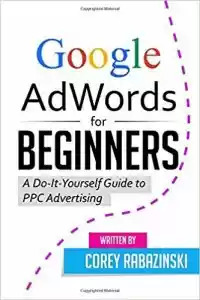
4.4 rating on Amazon, #1053 in advertising
This is a self-published work and a slender 59 pages for $9.99 in physical book form, which makes sense for a single digital topic. This is a good primer for people new to Google AdWords which will give you enough to get started and optimize your campaigns to a reasonable degree.
The book reads like an intro to a PPC training class as he goes through his 8-step process for setting up, bidding, and operating an AdWords account covering the following topics:
- Account and Campaign Structure
- Location, Location, Location
- Bidding and Budgeting
- Ad Extensions
- Writing Ads
- Keyword and Match Types
- Research
- Optimizing and Testing
The book could benefit from 3 additional elements: 1) context of PPC in the marketing mix, 2) examples of successful campaigns, and 3) a summary section on tips and tricks and pitfalls to avoid. Overall, it is good place to start, informative, and a quick read. Try our Digital Marketing Quiz.
5. Introduction to Programmatic Advertising
By Dominik Kosorin, 2016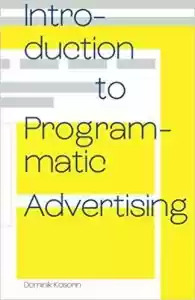
5.0 rating on Amazon, #192 in Advertising
This is an upper-intermediate to advanced book that provides breadth and depth on the topic of programmatic display buying. As a career performance digital marketer, I have always had a problem with the nuances of programmatic buying because it was so close to the direct response method we employed all along. In brief, programmatic buying uses segmentation, tracking, behavior, and contextual bidding to mine general bulk ad inventory for targeted inventory results at a more efficient price.
Learn more about display retargeting.
Kosorin provides a thorough explanation of tracking cookies and pixels and the differences between first-party and third-party tracking. He explains contextual, semantic, behavioral, and look-alike retargeting. He covers programmatic TV, programmatic native, and programmatic video and audio ads as well. He also defines how mobile programmatic is different from desktop, using app info, cross-device identification, and location-based marketing.
The key acronyms in the space are: DSP – demand side platform, SSP – supply side platform, and DMP – data management platform. In brief the DSP is a purchase desk, the SSP is a selling desk, and DMP is the data and logic needed to make good buys. DMP is basically data alchemy that identifies the gold in the ore and informs how to and how much to bid. What is truly new in Programmatic Advertising is RTB or real-time bidding where automated formulas can find a particular targeted user, offer 1 unit of inventory and proffer it to an exchange and find the highest bidder and serve the ad, all within a few seconds.
Kosorin’s book reads like a work from a deep subject matter expert. I recommend digital marketing books like this for people with a few years’ experience in the advertising industry.
6. Blogging: A Practical Guide to Plan Your Blog: Start Your Profitable Home-Based Business with a Successful Blog
By Jo and Dale Reardon, 2015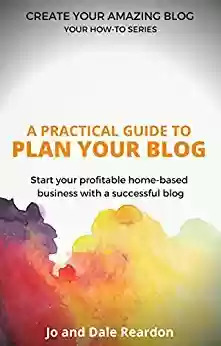
4.3 rating on Amazon, #1 in Kindle store for Computers and Technology
This digital marketing books overview is excellent and provides good step-by-step advice for setting up and running your blog. The book is digital only and free. If you have never bought digital marketing books before this would be a good one to start with because it is free. You do not need a Kindle or dedicated reader, you can read it on your laptop or smartphone. Usually the free and $0.99 books are too thin and used as lead gen to upsell bigger digital marketing books or training courses, but that is not the case with this one. See the blog checklist.
The very practical 10-step model is:
- Define Your Goals
- Choose Your Site Name
- Manage Your Technology
- Define Your Target Audience
- Identify Your Keyword Phrases
- Define Your Blog Categories
- Create Your Content Strategy
- Create Your Blog Publishing Schedule
- Decide What Type of Content to Publish
- Decide Who Will Do What
The authors provide an excellent review of and links to free tools you can use to apply their advice. So it really delivers on its title and I highly recommend it.
Blogs make sense for all kinds of websites because they create a section for deep authoritative content useful for new visitors and those moving down the funnel. Recent research shows that pages ranking in position 1 and 2 in Search are averaging more than 1500 words, and a blog is one of the few places on the site that can handle the volume.
A few blog tips I will add for corporate marketers and SEOs:
- Target demand before you start writing
- Write at least 1000 words
- Use keyword-rich titles and H1s, and H2s
- Use 3 images per post with image alt tags
- Interlink your blogs and pages
- Link from the blog to content that causes leads or transactions
- Update your blogs and refresh the publish date.
7. Email Persuasion: Captivate and Engage Your Audience, Build Authority and Generate More Sales With Email Marketing
By Ian Brodie, 2013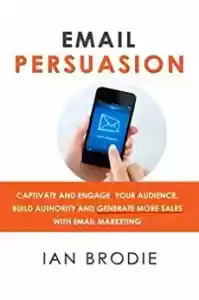
4.7 rating on Amazon, #353 in Direct
Email is one of the most mature digital channels, so I would have expected a wide selection of digital marketing books on the topic. There were only 9 physical books and 5 digital marketing books on the topic on Amazon. I reviewed 3 of them and recommend this one.
Read more on marketing automation.
Email Persuasion covers the basics and intermediate-level email strategies, including:
- The Customer Insight Mapping technique for building deep understanding of what your clients need and what will motivate them to buy from you.
- 6 surefire subject line models that will get your emails opened and read.
- The "opt-in formula" for getting the right people to subscribe to your emails (and how to accelerate the growth of your subscriber list).
- How to engage AND persuade with your emails so that you build a loyal "fan base" ready to buy from you.
- The advanced techniques for turning email subscribers into paying clients (and why accepted wisdom on selling in emails is almost all wrong).
I particularly like chapter 4, Talk to Me: Writing Emails that Engage and Persuade, which explains the key to voice and effective messaging.
“What we’re aiming to do is get our subscribers used to taking action whenever we send them an email. If subscribers see themselves as action takers when they receive your emails because they’ve taken small actions before, then when they are considering a bigger action like calling you to discuss working together or buying one of your products, they’re much more likely to do it. We’re also building our relationship with them by interacting personally.”
Solid advice, right?
8. Social Media Marketing All-In-One for Dummies
By Jan Zimmerman and Deborah Ng, 2017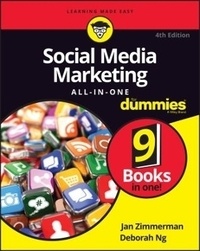
4.2 rating on Amazon, #60 in web marketing
Social is one the newer channels and it has become complex with both organic and paid elements. Social is defined by user-generated content and dialogue verses the traditional push marketing of offline and digital. Companies need to embrace these two elements to make social successful.
Wiley’s comprehensive 677-page anthology of social, called Social for Dummies says it is 9 digital marketing books in one. It covers content marketing and Facebook, Twitter, Google+, Pinterest, Snapchat, Instagram, and LinkedIn platforms in detail. They also touch on the tier-2 platforms: Spotify, Tumblr, Vimeo, Periscope.
Chapter 5 covers paid advertising on Facebook, Twitter, LinkedIn, and Pinterest. The last 100 pages or so is dedicated to social media tracking and analytics.
The book has graphic labels down the margins of every page for Tips, Warnings, and Remember. Every chapter section includes summary bullet lists. Like Digital Marketing for Dummies, this book shows the extra care a traditional publisher makes to transform text into a text book. This is recommended for full-time social media marketers.
Read a Twitter case study white paper.
9. The Webinar Way: The Single Most Effective Way to Promote Your Services, Drive Leads & Sell a Ton of Product
By Sherri Rose, 2012
4.9 rating on Amazon, #626 in web marketing
You can tell from the title that the authors are major evangelists for the webinar channel. The book is structured on their alliterative 7 pillars: Perspective, Plan, Promote, Present, Power Position, Pitch, and Partner. These make a good webinar framework, especially the Pitch or offer point.
Learn the surefire method for successful webinars in this checklist.
After doing more than 30 webinars for BrightEdge, my top tips are:
- Use webinar for mid-funnel new and to engage existing customers
- Scrub your list for accuracy and to improve deliverability
- Integrate your registration with your CRM and your CRM with your email system
- Invite your list 3 times to the event
- Make sure your salespeople invite their warm prospects to the event
- Ask questions and use polls, ask them if they would like follow up from you
- Make a very clear call to action before the 30 minute mark of the event
- Make sure your salespeople follow up with both attendees and non-attendees
After reviewing all these digital marketing books, I again recommend Wiley’s Digital Marketing for Dummies for all beginners and early intermediate practitioners and any of the other digital marketing books on the list for intermediate to advanced marketers.


